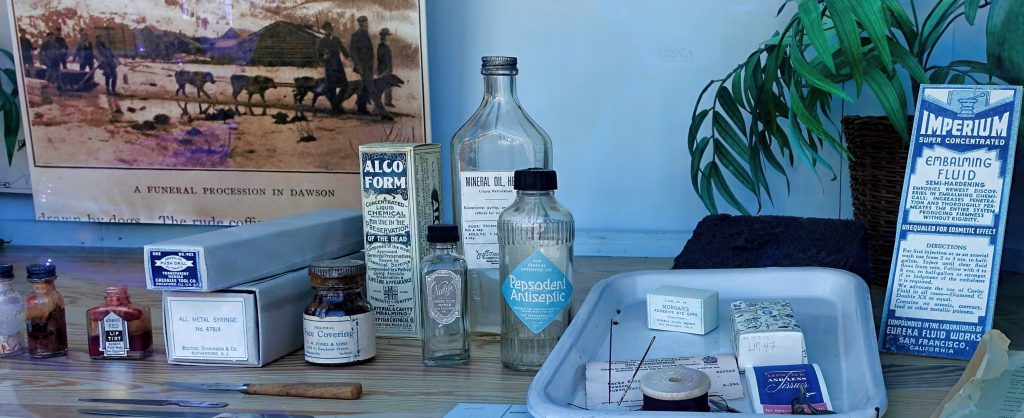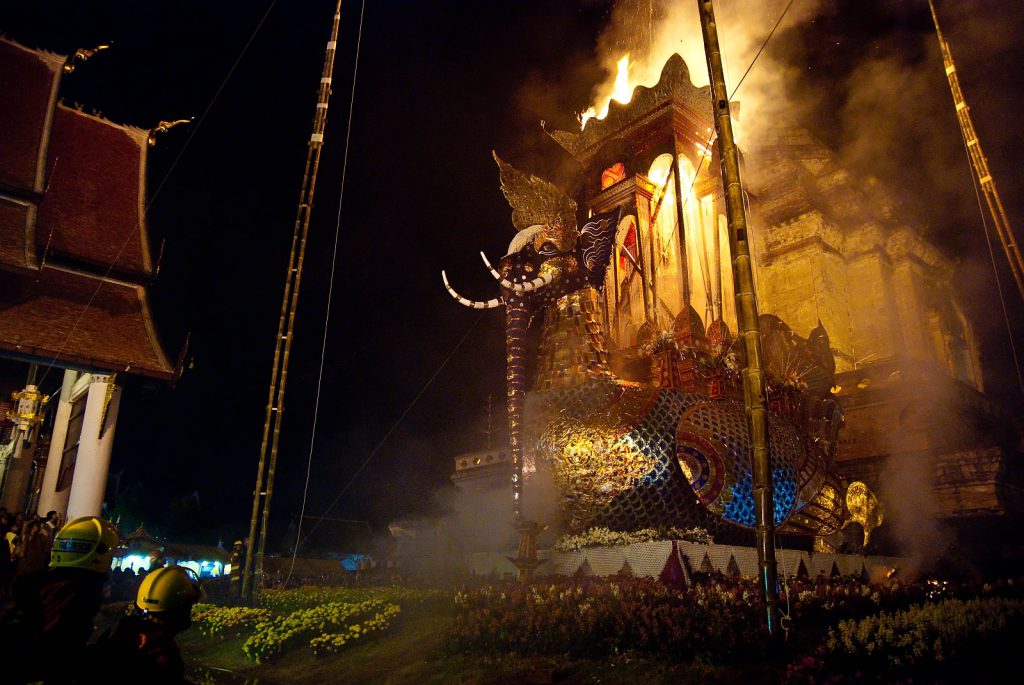The Weird, Wild World of Mortuary Customs
A couple of months ago, I attended the funeral of a friend.
Howard was almost 90 years old when he died, and not only did he live longer than most humans, he lived more. Though he grew up poor, he died wealthy. He raised a beautiful family and is survived by three generations of stable, healthy descendants. He designed and built bridges and dams; there are dozens of mute monuments testifying to his legacy in the American West. He even went skydiving at age 82 and lived to tell the tale. I loved that story, for he told it with a glimmer in his eye and a hearty laugh in his belly. Howard is the guy I want to be in retirement.
On the way to his funeral, my wife and I did what most people do in that situation—we rationalized. “He lived a great life,” we said. “His time had come.” It would be easy to say goodbye, we thought. After all, Howard had won life’s lottery.
We got to the cemetery, parked the car, and walked into the chapel.
I had given zero advance thought to what might be happening there. The placidly cheerful receptionist directed us right, across the foyer, to Salon C. Given the early hour, I stupidly assumed there might be a reception, perhaps with coffee and donuts. It never occurred to me to think about why a chapel in a cemetery might have a “salon.”
We walked into the room and I immediately spotted Howard’s bald pate sticking out of an open casket lined with gray satin. Startled, I gasped audibly and spun on my left heel to do the only reasonable thing under the circumstances—flee. My wife grabbed my arm. I tried to grab my composure; it slipped through my hands like a zephyr. After a few minutes in the hallway, I regulated my breathing again. I wiped away enough tears to be presentable, and we walked back into the room.
There he—or it—was. Howard, or more precisely Howard’s body, lifeless and plastic. In life, he had always reminded me of my father. In death, he looked even more like my dad than I remembered, adding to my discomfort.
Curiously, he was wearing a nice suit. I’d seen Howard in a wide range of social situations over the years, during which he always, without fail or apology, wore sweats. Not a sweat suit, mind you, but mismatched sweat pants and sweat shirts. It was one of his most endearing qualities: He put comfort before style and couldn’t have cared less what other people thought about how he looked. But there he was, at his last social gathering, resplendent in dress clothes. He looked old yet surprisingly good. Nevertheless, there was something unsettling about his appearance, as if he belonged in a wax museum.
Driving home, my wife and I talked about how Westerners deal with death. Unless you work as a first responder or in hospitals or in the funeral business, most people in the West have surprisingly little contact with dead people. Society, not to mention the funeral industry, has sanitized the experience for us. That may be a good thing, but maybe not. I’m still trying to decide.
When I saw Howard for the last time, he had been dead for 10 days. If the process of natural decomposition had been left to run its course, that visit would have been a very different experience for everyone involved. (I’d rather not go into the details when writing about a friend; suffice it to say, the schedule of natural human decomposition is rapid, predictable, and well-documented.) But Howard had been embalmed.
Embalming, when you think about it, is a really strange practice. It requires a licensed mortician to replace natural bodily fluids with formaldehyde, deodorants, and other solutions to delay decomposition. It’s a chemically induced trifecta of disinfection, preservation, and restoration.
Embalming requires at least 10 steps, including massage to alleviate rigor mortis, “setting the face” (which requires wiring the jaw shut, stitches to hold the lips in place, and “caps” for the eyes, which I still don’t understand) to create the desired expression, and detailed attention to specific problem areas in which gases may have built up within the body. Embalming is an invasive and violent process that results, quite amazingly, in a corpse that appears at rest and at peace. Morticians expertly create a doppelgänger, one that friends and family can view with minimal shock and dismay. Embalming produces an aesthetic veil, a membrane, behind which the violence of death and natural decay are hidden.
To put it in more cynical terms: We pickle our loved ones.
Embalming has been practiced by relatively few cultures, the most famous of which are the ancient Egyptians, but people around the world engage in a wonderful variety of funeral practices. Buddhists routinely perform platform cremations. People get buried at sea and in tree trunks. They are left in the open, where scavengers work their magic. Seen in this light, embalming is one practice among many, no more or less peculiar than any other.
(Speaking of funeral practices, I work near two Egyptian mummies at the Denver Museum of Nature & Science, each of whom was embalmed according to the technology and traditions of her day. I wonder how Howard would feel about the prospect of ending up in a museum display 3,000 years from now. I think he’d find it amusing; I hope he knows I’m smiling too.)
In the Unites States, embalming was most popular from the mid-19th through the early 21st centuries, coincident with professionalization of the funeral business. By 2015, cremation had become more prevalent than embalming and burial in the U.S., and that’s probably a good thing. Embalming is horrible for the environment—800,000 gallons of formaldehyde-based embalming fluid are buried in the U.S. every year. And open-casket funerals are tremendously expensive—the median cost of a funeral in 2014 was around $8,500, high enough to be a significant burden on most families. By comparison, the median cost of a cremation in 2014 was around $6,100, nearly 30 percent less. Funeral practices, like every other cultural phenomenon, change.
As I think fondly of Howard, I remember his smile, his laugh, and his wisdom, not to mention his sweats. But I also remember him lying antiseptically in his casket, looking strangely out of place at an event entirely focused on him.
In the end, I’m glad I had one more chance to see him, even as that visit convinced me even more that I don’t want to be embalmed. I guess you could say it’s just one more lesson I learned from Howard. Bon voyage, old friend.

































